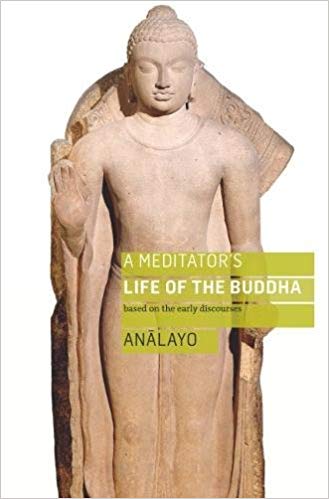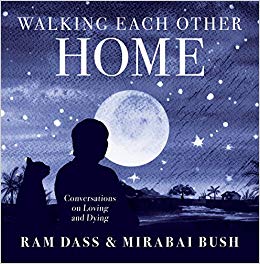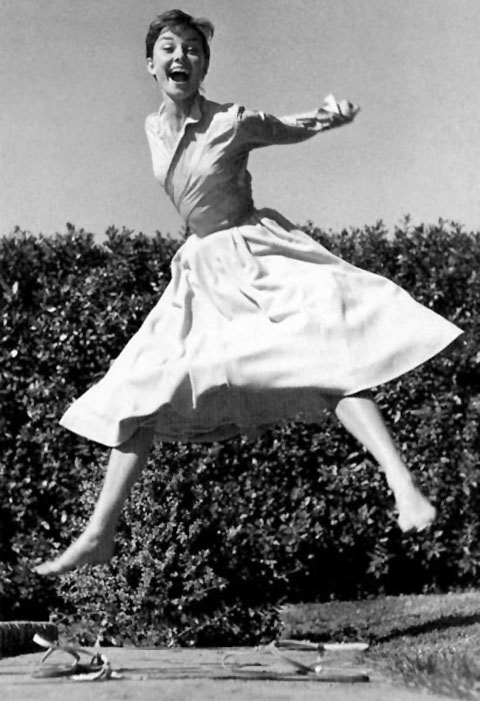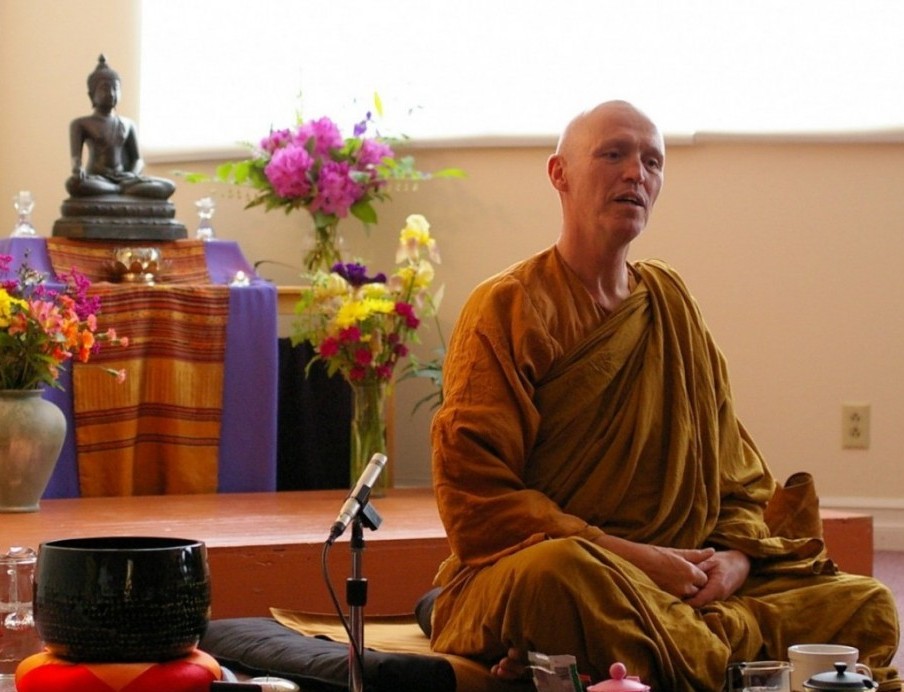All Day with Analayo…and the Buddha
 Tomorrow, I’ll be “attending” a day-long retreat led by Bhikkhu Analyao (!) — which will be at Spirit Rock — but they’re live-streaming it, so if you sign up here, you can attend on-line for FREE!!!
Tomorrow, I’ll be “attending” a day-long retreat led by Bhikkhu Analyao (!) — which will be at Spirit Rock — but they’re live-streaming it, so if you sign up here, you can attend on-line for FREE!!!
(It’s from 11:30 am to 7:00 pm St. Louis time. But I think if you register before it starts, you’ll have access to the recorded video for a couple of weeks.)
According to the Spirit Rock website: “During this day, Bhikkhu Analayo will read and comment on excerpts from his recent book, A Meditators Life of the Buddha, followed by guided meditation instructions.
“The instructions are aimed at experienced practitioners and presuppose meditative expertise as well as readiness to face our own mortality, as one of the teachings will be on recollection of death. Participants are encouraged to read A Meditator’s Life of the Buddha prior to the retreat [available as a FREE pdf here].”
***
I’ve just about finished the book, which I really like. (It’s a LOT less academic than most of his previous books.) Here’s what Jack Kornfield says in the Introduction:
A common misunderstanding found in modern mindfulness teachings is that by simply observing experience with mindfulness all will be transformed. But there is more to mindfulness than this.
The wisdom in this book helps us to realize that wise mindfulness recognizes what is present, and then guides us from unwholesome to wholesome states. We can learn to see clearly and then, in response, tend, direct, refine, and transform our own mind.
Developing a mind and heart suffused with wisdom and metta allows us to live with freedom wherever we are. Bhikkhu Analayo shows us how the Buddha embodied this spirit, ever responsive to those around him. There is an immediacy, decorum, grace, open-handedness, and profound compassion in his tending of all he touched. We are invited to bring these same qualities alive in our own Dharma life.
Read this book slowly.
Savour it and let it sink in.
Make it a manual of practice….
May the teachings, stories, and practices here bring you the blessings of the Buddha.
***
Sadhu. Sadhu. Sadhu.
Conversations on Loving and Dying
 Walking Each Other Home: Conversations on Loving and Dying by Ram Dass and Mirabai Bush is now available!!! It’s such a beautiful little book. And quite intimate. Mirabai recorded the audio version — so of course I ordered it — although I don’t even own a CD player!
Walking Each Other Home: Conversations on Loving and Dying by Ram Dass and Mirabai Bush is now available!!! It’s such a beautiful little book. And quite intimate. Mirabai recorded the audio version — so of course I ordered it — although I don’t even own a CD player!
Here’s a sample: If I’m going to die, the best way to prepare is to quiet my mind and open my heart. If I’m going to live, the best way to prepare is to quiet my mind and open my heart.
*** That’s always the best. ***
What Needs to Be Done
 For those who have not yet seen the announcement published Aug 27 in Tricycle magazine:
For those who have not yet seen the announcement published Aug 27 in Tricycle magazine:
Against the Stream Closes Doors as Investigation Finds Misconduct by Founder Noah Levine
Following a months-long investigation into allegations of sexual misconduct, the Against the Stream Meditation Society (ATS) has removed its founder, Noah Levine, from their board of directors and from his teaching responsibilities, the organization said in a statement sent out on August 25. As a result of the investigation and the controversy surrounding it, the California-based ATS said it will also be closing its meditation centers.
While the independent investigation, conducted by attorney Roberta Yang at the request of ATS, did not determine if Levine had committed any criminal offenses, it did find that Levine likely broke ATS rules—specifically “the Third Precept of the Teacher’s Code of Ethics, namely, ‘to avoid creating harm through sexuality,’” the statement says. [click here to read the full announcement]
***
Noah was a very popular “new generation” teacher in the Western Insight tradition. I sat with him several times in Yucca Valley, at retreats led by Jack Kornfield, and I liked him a lot. So this news disappoints me tremendously.
But I am glad, since this is the situation, that it has come to light and is being taken seriously. With urgency. And with real consequences. (The LA police department has also opened an investigation.)
No one is immune.
May we continue to hold each other accountable.
And with compassion.
May all beings be free from suffering.
And the causes of suffering.
Whatever You Get Interested In…. Gets Interesting.
 I’m back now from the Concentration retreat, which was VERY. VERY. INTERESTING.
I’m back now from the Concentration retreat, which was VERY. VERY. INTERESTING.
I wish you could all have been there. At least I can give you a peek:
In one of my favorite talks from the retreat — the “Enjoyment” talk — Sally Armstrong references Ajahn Sucitto’s lovely little book, Samadhi is Pure Enjoyment.
Here’s a link to the talk: Developing a Skillful Relationship to Happiness.
And here’s an excerpt from the book:
“…The idea of focusing is to settle, to focus in a way in which you feel settled and easy, not confused or sleepy. That’s the only point where you’ll experience a steady breath. This is really where your awareness can settle. Which means that it’s a matter of attitude as well as a physical point.
“Then you’ll find yourself settling in. You’ll begin to experience some kind of sign — the quality of openness without attachment has a characteristic feel, such as brightness. Listen in to that (if it’s something you experience through listening) as if you’re listening to the listening. If it’s tactile, feel it. If it has an emotional base, resonate with it.
“It is beautiful. Notice the beauty. What is this beauty? It’s where the mind feels gently delighted and uplifted. This is rapture — the threshold of samadhi….
“We can’t hold this beauty of rapture. A relationship to beauty is something akin to devotion. We don’t hold it; we’re aware of it in a way that’s both gladdened and respectful. We have to give ourselves to it. Of course, this is something we’re not used to; it’s something that requires trust.
“Trust your body first of all. The body is something that can be trusted much more than the mind. As one learns to trust, one learns to receive the blessings of what is good and conducive to the heart’s welfare. This brings joy….
“I think of ‘enjoyment’ as ‘receiving joy’; and samadhi as the art of refined enjoyment. It is the careful collecting of oneself into the joy of the present moment.
“Joyfulness means there’s no fear, no tension, no ‘ought to’. There isn’t anything we have to do about ti. So there is stillness. It’s just this.”
This Wide Human Stream
 Getting everything done before I catch a flight to California to go on retreat appears to be taking quite a bit longer than I had expected, so I won’t be posting again until sometime after I get back. (I return late on Aug 30.)
Getting everything done before I catch a flight to California to go on retreat appears to be taking quite a bit longer than I had expected, so I won’t be posting again until sometime after I get back. (I return late on Aug 30.)
Usually before going on retreat, I leave you with a selection from my favorite inner travelogue, Invisible Cities, by Italo Calvino. This time I’d like to offer something similar, but different — from Flights, by Olga Tokarczuk, which won the Man Booker Prize this year and was just released today:
The Bodhi Tree
I met a person from China. He was telling me about the first time he flew to India on business; he had lots and lots of important individual and group meetings. His company produced quite complicated electronic devices allowing blood to be conserved longer-term, and allowing organs to be safely transported, and now he was negotiating to open up new markets and start some Indian subsidiaries.
On his final evening there he mentioned to his Indian contractor that he had dreamed since childhood of seeing the tree under which the Buddha had attained enlightenment — the Bodhi tree. He came from a Buddhist family, although at that time there could be no public mention of religion in the People’s China. But later, once they could avow whatever faith they wished, his parents unexpectedly converted to Christianity, a Far Eastern variety of Protestantism. They felt that the Christian God might come in handier to His followers, that He would be, let’s be honest, more effective, and it would be easier with Him to get some money and get set up. But this man did not share that view and kept the Buddhist faith of his ancestors.
The Indian contractor understood the man’s desire. He nodded and topped off his Chinese colleague’s drink.
In the end they all got pleasantly inebriated, getting out all the tensions of signing contracts and negotiations. With the last of their strength, wobbling on swaying legs, they went into the hotel sauna to sober up, since in the morning they still had work to do.
The following morning a message was delivered to his room — a little note with just one word: “Surprise.” Clipped to it the business card of his contractor. In front of the hotel stood a taxi, which now conveyed him to a waiting helicopter. After a flight of less than an hour the man found himself in the sacred spot where, beneath a great fig tree, the Buddha had attained enlightenment.
His elegant suit and white shirt vanished into the crowd of pilgrims. His body still preserved the bitter memory of alcohol, the heat of the sauna, and a rustle of papers signed in silence on the glass surface of the modern table. A scraping of a pen that left behind his name. Here, however, he felt lost, and helpless as a child. Women who came up to his shoulder, colorful as parrots, pushed past him in the direction this wide human stream was flowing. Suddenly the man was frightened by the thing that he repeated as a Buddhist several times a day, when he had time — the vow. That he would try to bring with his prayers and actions all sentient beings to enlightenment. Suddenly this struck him as utterly hopeless.
When he saw the tree, he was — to tell the truth — disappointed. He had not a thought in his head, nor any prayers. He paid the place its due homage, kneeling many times, making substantial offerings, and about two hours later, he returned to the helicopter. By afternoon he was back in his hotel.
Under a stream of water in the shower that washed from his body the sweat, dust, and strange sweetish smell of the crowd, the stalls, the bodies, the ubiquitous incense, and the curry people ate with their hands off paper trays, it occurred to him that every day he was witness to what had shaken Prince Gautama so: illness, old age, death. And it was no big deal. It produced no change in him; by now, to tell the truth, he’d grown inured to it. And then, drying himself off with a fluffy white towel, he thought he wasn’t even sure he truly wished to be enlightened. If he really wanted to see, in one split second, the whole truth. To peer inside the world as though by X-ray, to glimpse it in the skeletal structure of a void.
But of course — as he assured his generous friend that same evening — he was extremely grateful for this present. Then from the pocket of his suit coat he carefully extracted a crumbled leaf, which both men inclined over in rapt, pious attention.
***
See you in September!
I Got In!!!
 I just found out I got into the month-long retreat Guy and Sally Armstrong will be teaching at the Forest Refuge next June!!! (There are less than 30 spots available and they’re awarded by lottery.) My buddy Carolyn got put on the wait list (bummer) but I think chances are good a spot will open up. It’s almost a year away, after all.
I just found out I got into the month-long retreat Guy and Sally Armstrong will be teaching at the Forest Refuge next June!!! (There are less than 30 spots available and they’re awarded by lottery.) My buddy Carolyn got put on the wait list (bummer) but I think chances are good a spot will open up. It’s almost a year away, after all.
The theme of the retreat is The Still Heart of Awareness and the structure is pretty unusual:
This retreat will strengthen our understanding and experience of the nature of awareness in meditation practice. We will explore this in three stages.
During the initial part of the month, we will build meditative stability through a focus on anapanasati (mindfulness of breathing).
In the next phase, we will undertake intensive practice of metta (lovingkindness), allowing the beautiful and responsive qualities of heart to unfold.
Then, with concentration and lovingkindness as our foundation, the last stage of the retreat will focus on specific meditative techniques that allow us to rest in the pure nature of awareness. The teachers will offer regular meditation instructions, talks about the teachings and individual meetings. A minimum stay for the full month of June is required. Participants are expected to follow the sequence of instructions as they are given.
***
Sounds awesome. (Finger crossed, Carolyn!)
When It’s Good….
In the same Q&A session I wrote about yesterday, Ajahn Sucitto was also asked:
Do you think jhana training is necessary? [jhana: deep states of meditative absorption]
He says:
I think it’s very helpful. Train towards that. The degree to which one has results is sometimes dependent on one’s capability or one’s limitations or on situations. But train towards that because jhana training encourages one to keep discarding what’s not necessary.
It keeps us centering, centering, centering…and discarding that, discarding that…and protecting and enjoying the good (the qualities that develop as the mind purifies).
So it’s that attitude of homing in. But also of enjoying, deeply absorbing, taking in…. Anything you do with that attitude — it’s going to help in the process of training the mind not to keep skipping on and not to go off onto side tracks. And to stay on theme. And to enjoy the good.
This is absolutely necessary. To the degree to which your mind will stabilize into jhana — it takes time, you know, and certain capacities — but the attitude is one you must always bear in mind: Absorb into the good!
When it’s good — take it in, feel the quality of good. Because this is going to enrich you. If you skip off onto the next thing, you didn’t taste the fruit. You just picked it. But you didn’t taste it! So then it doesn’t have the deep effect.
***
Great! This is exactly what I’m going to be doing at the Concentration Retreat beginning August 19. Can’t wait!
Sucitto’s Advice for Dharma Teachers
In a different Q&A session from the one I posted yesterday (but from the same retreat), Ajahn Sucitto was asked:
What advice can you give upcoming Dhamma teachers in the West?
His answer:
More practice is necessary. And, kalyana mitta.
Practice a lot. And cultivate kalyana mitta — spiritual friendship. Those are for anybody…not just Dhamma teachers…but for upcoming human beings! [laughter]
Practice a lot and stay with what you know. And don’t bluff. And seek kalyana mitta, who will help to tell you when you’re bluffing….and will accept you — love you — all the same.
That’s briefly speaking. I’m sure there’s much advice in detail you can get from other Dhamma teachers, but that would be my little piece in it.
***
Sounds like enough to me!
(The exchange above was part of this Q&A session (beginning at the 33-minute mark). The tape (at the time of this post) is incorrectly identified as Guided Meditation: Everything Unfolds from the Center. But it is, in fact, the recording of Q&A: Negotiating Contact and Gladdening the Mind, a session that also includes questions on the meaning of spirit, spiritual powers, consciousness creating duality, transmuting sexual energy, sampajanna, and jhana training. Click here to listen.)
It Begins to Shine
I’ve been listening to a lot of Ajahn Sucitto’s new talks lately and, as always, have come across several teachings that have grabbed my attention so powerfully, that I had to stop and let my heart drink it in. Here’s one from a recent Q&A session, in which he talks about the quality of adhitthana (usually translated as “resolve” or “determination”).
“Pick one or two parami [wholesome qualities such as: generosity, patience, honesty, goodwill, etc] that you really want to focus in on, and then you can do things [to deepen your commitment to this quality], like make an image of it.
“This is what shrines and rituals are about. You pick up on something, or you feel something where there’s a glow in your heart, a strength, a keenness… Yeah, a glow in your heart that says: This is meaningful; This is beautiful; This is strong; This is what I value — deeply. Or you look in your life and you think: What DO I value — deeply?
“If you’ve got one or two of those, you hold it and you contemplate it and you take it in — and it begins to shine, and fill you.
“Then you want to make some kind of image out of it. You can use a word for that — a verbal image — or a sound, or a chant or a prayer. Or you can make a physical image, like something you can fashion or paint, or just use flowers or sticks or something. And then you make a shrine. And you want to put that thing up there, and you want to look at it every day, and you want to offer things to it, and you want to bow at it — and then you’re establishing a real participating field with that quality. This is how you generate fields.
“You generate a meaningful field not just by thought, but by really placing something, going to it, enacting it, chanting it, praying to it — you know?
“Why do people do this? It’s not just because of some superstition. It’s because when you put it there and you keep activating it, potentizing it by your presence and by your actions — it starts to pay off. It starts to hold you. Yeah. And the next time you’re about to “lose it,” you remember that. You remember that, and you come back. You’ve look to that and you’ve thought about that every day and the next time you’re about to lose that quality — it brings you back.
“This adhitthana principle is something that I’ve used a lot. It’s powerful. You say what you resolve — and then, you listen. If something inside you says: That’s a good idea, then it’s not enough. So you say it again: I resolve this. If something says: Yeah, that’s interesting. Then no, that’s not good enough. So you say it again, until something in your heart goes: Mmmmm. Then you’ve got it. And maybe you fold your arms or you bow or something. Then that’s locked it.
“Then it’s not just a good idea. It’s not a thought that will later change its mind and say that’s NOT a good idea. This goes beyond that. You’ve planted something in the field.
“You don’t enter this field just by a little thought. You’ve got to plant it there. And then you’ve made that. And, at that depth, it holds you. It’s very powerful…..
“These are things that…. if it means something, it really… It does work. It works — on a level that’s difficult to explain rationally. Because the mind is not just rational. These are strong psychological potencies. When you make adhitthana, they go in there. This can be because you make a resolution with another person or because you know the “sign” of something that gives you faith and strength and then, if you get that sign, that’s fantastic. Then make the most of it. Really. Get it established strongly. And don’t think about it ‘working’ in terms of time…”
***
When I first hear this I had to get up right in the middle of it and go make a drawing. (A graphic symbol, actually.) Which is not quite in its finished form, but which I will put on my altar as soon as it is.
(The excerpt is edited for readability. It begins at about the 34-minute point on the tape, but really, you should listen to the whole thing. FYI: In this talk, he also gives a thorough and quite beautiful response to a question about female monastics. Click here.)





